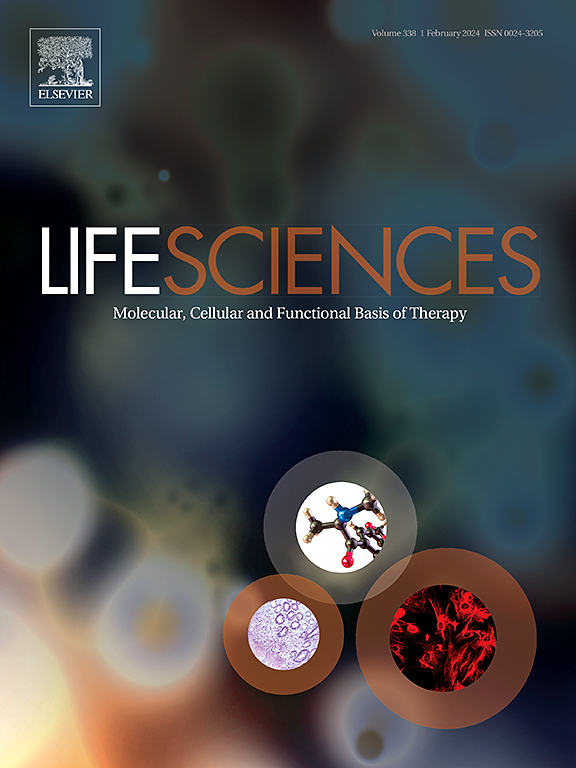Dapagliflozin promotes metabolic reprogramming against myocardial infarction through the MAPK-FOXO3-STC1 and HIF-1a-STC1 pathways
IF 5.1
2区 医学
Q1 MEDICINE, RESEARCH & EXPERIMENTAL
引用次数: 0
Abstract
Background
Myocardial infarction (MI) results in mitochondrial dysfunction and metabolic imbalance, ultimately causing cellular injury and impaired cardiac function. Dapagliflozin (DAPA) has been shown to reduce cardiovascular mortality; however, the underlying mechanisms by which it confers cardioprotection in MI remain incompletely understood.
Methods
To explore the protective role of DAPA, an oxygen-glucose deprivation (OGD) model was established in H9c2 cardiomyoblasts to assess its effects on cell proliferation, apoptosis, metabolism, and mitochondrial function. A series of molecular assays, including qRT-PCR, Western blotting, chromatin immunoprecipitation (ChIP), dual-luciferase reporter analysis, and rescue experiments, were performed to elucidate the involvement of HIF-1α, FOXO3, and STC1 in DAPA-mediated responses. In vivo, the cardioprotective effects of DAPA were validated using a rat model of MI.
Results
DAPA promoted proliferation, inhibited apoptosis, and restored glucose uptake, ATP generation, and mitochondrial activity in OGD-treated H9c2 cells by modulating the JNK signaling pathway, promoting FOXO3 degradation, and engaging the HIF-1α–STC1 axis. In MI rats, DAPA significantly reduced infarct size, improved cardiac function, and alleviated myocardial fibrosis and apoptosis. Rescue experiments further confirmed that overexpression of STC1 potentiated DAPA's effects, whereas STC1 knockdown attenuated them.
Conclusion
These findings indicate that the HIF-1α–FOXO3–STC1 pathway plays a central role in the cardioprotective mechanisms of DAPA. By modulating the MAPK–FOXO3–STC1 and HIF-1α–STC1 signaling cascades, DAPA improves mitochondrial function and metabolic homeostasis, supporting its therapeutic potential in the treatment of MI.
达格列净通过MAPK-FOXO3-STC1和HIF-1a-STC1途径促进心肌梗死的代谢重编程
心肌梗死(MI)导致线粒体功能障碍和代谢失衡,最终导致细胞损伤和心功能受损。达格列净(DAPA)已被证明可降低心血管疾病死亡率;然而,它在心肌梗死中提供心脏保护的潜在机制仍不完全清楚。方法为探讨DAPA对H9c2心肌细胞的保护作用,建立氧糖剥夺(OGD)模型,观察DAPA对心肌细胞增殖、凋亡、代谢及线粒体功能的影响。通过qRT-PCR、Western blotting、染色质免疫沉淀(ChIP)、双荧光素酶报告基因分析和救援实验等一系列分子分析来阐明HIF-1α、FOXO3和STC1参与dapa介导的应答。结果DAPA通过调节JNK信号通路、促进FOXO3降解和参与HIF-1α-STC1轴,促进ogd处理的H9c2细胞增殖、抑制细胞凋亡、恢复葡萄糖摄取、ATP生成和线粒体活性。在心肌梗死大鼠中,DAPA显著减小梗死面积,改善心功能,减轻心肌纤维化和细胞凋亡。救援实验进一步证实,STC1过表达增强了DAPA的作用,而STC1敲低则减弱了DAPA的作用。结论HIF-1α-FOXO3-STC1通路在DAPA的心脏保护机制中起核心作用。DAPA通过调节MAPK-FOXO3-STC1和HIF-1α-STC1信号级联,改善线粒体功能和代谢稳态,支持其治疗心肌梗死的潜力。
本文章由计算机程序翻译,如有差异,请以英文原文为准。
求助全文
约1分钟内获得全文
求助全文
来源期刊

Life sciences
医学-药学
CiteScore
12.20
自引率
1.60%
发文量
841
审稿时长
6 months
期刊介绍:
Life Sciences is an international journal publishing articles that emphasize the molecular, cellular, and functional basis of therapy. The journal emphasizes the understanding of mechanism that is relevant to all aspects of human disease and translation to patients. All articles are rigorously reviewed.
The Journal favors publication of full-length papers where modern scientific technologies are used to explain molecular, cellular and physiological mechanisms. Articles that merely report observations are rarely accepted. Recommendations from the Declaration of Helsinki or NIH guidelines for care and use of laboratory animals must be adhered to. Articles should be written at a level accessible to readers who are non-specialists in the topic of the article themselves, but who are interested in the research. The Journal welcomes reviews on topics of wide interest to investigators in the life sciences. We particularly encourage submission of brief, focused reviews containing high-quality artwork and require the use of mechanistic summary diagrams.
 求助内容:
求助内容: 应助结果提醒方式:
应助结果提醒方式:


